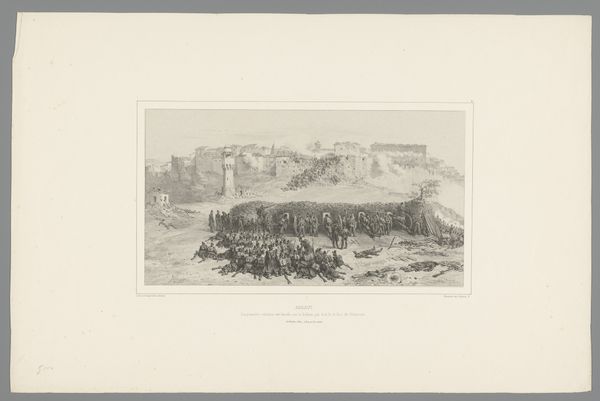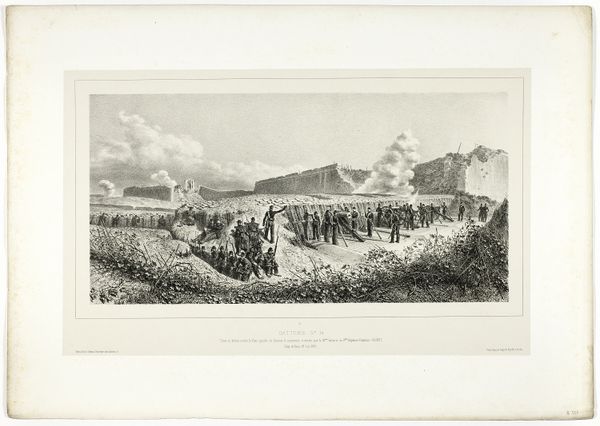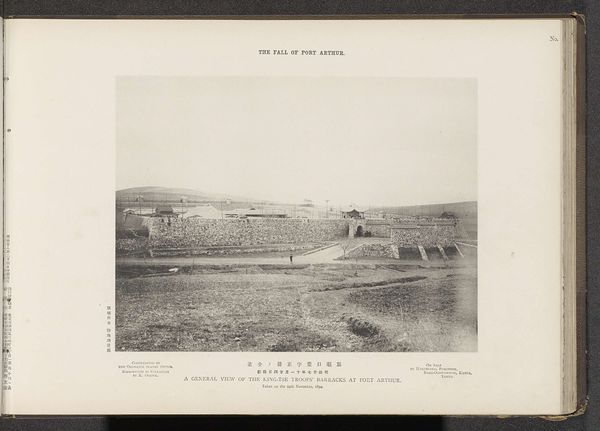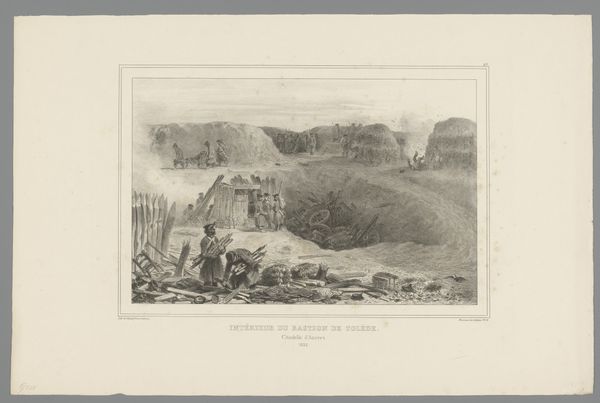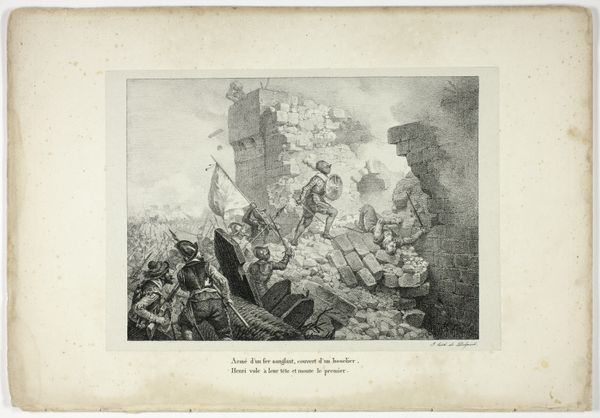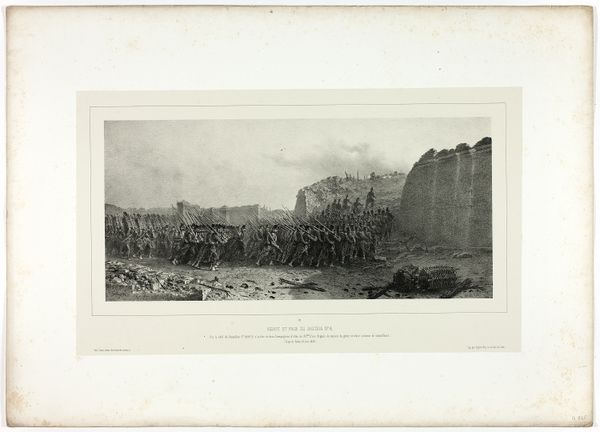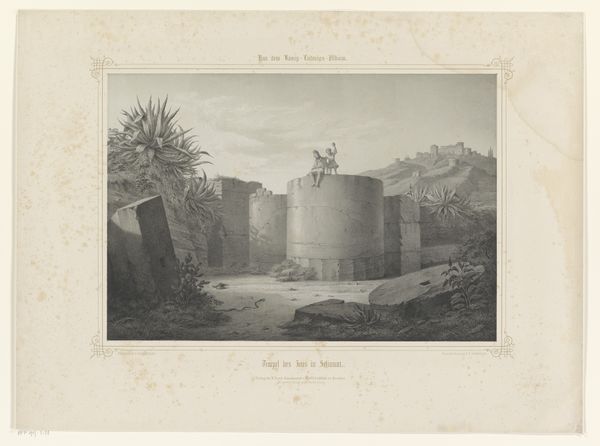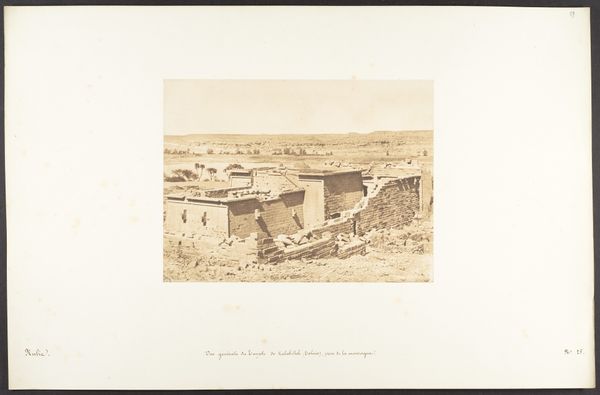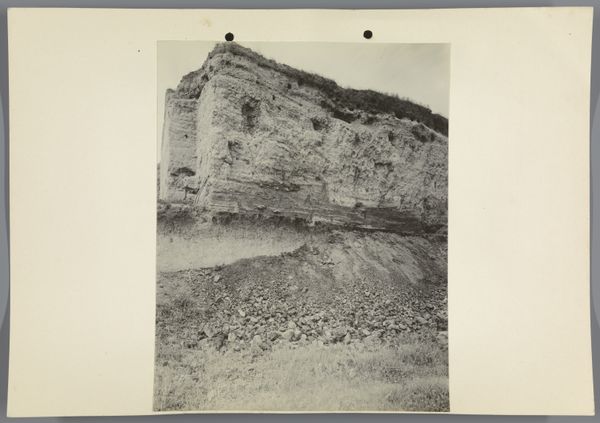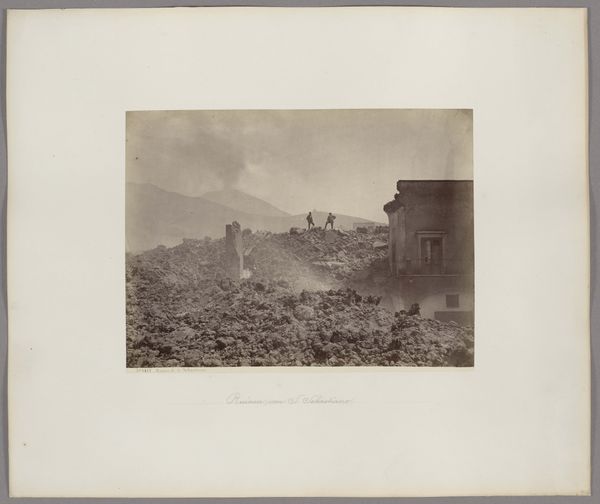
Workers Crowning the Breach of Bastion 7, from Souvenirs d’Italie: Expédition de Rome 1859
0:00
0:00
drawing, lithograph, print, paper
#
drawing
#
narrative-art
#
lithograph
# print
#
landscape
#
paper
#
history-painting
Dimensions: 217 × 356 mm (image); 304 × 415 mm (primary support); 407 × 568 mm (secondary support)
Copyright: Public Domain
Curator: Here we have Auguste Raffet’s lithograph from 1859, titled "Workers Crowning the Breach of Bastion 7, from Souvenirs d’Italie: Expédition de Rome." Editor: The overwhelming sense I get immediately is one of almost unbearable weight. Visually, and I suspect also metaphorically. Curator: Raffet produced this lithograph as part of a series documenting the French military intervention in Rome. We see the aftermath of battle and the beginning of reconstruction by labourers. The print exemplifies the narrative conventions and social context typical of the time. The heroic yet burdened working class. Editor: Yes, precisely. These workers appear almost ant-like, crawling over the scarred landscape. And "crowning the breach"… such loaded language, implying triumph while showing sheer drudgery. Who exactly is being crowned here? It is not clear. The romanticized language clashes directly with the brutal reality portrayed. The historical power dynamic screams of exploitation. Curator: The lithographic technique allows for detailed depictions of the soldiers and workers. The play of light and shadow does emphasize both the devastation of war and, also, the arduous nature of rebuilding. Consider how Raffet renders each figure both as an individual but also as part of a collective effort. He attempts to illustrate this public role of war. Editor: But that’s just it – it *attempts* to, but it really shows more the dehumanizing aspects. How each of these people become units or pieces, without any unique consideration. Their collective identities are formed entirely around work under violence. Where is the discussion of the other violences surrounding race and class? Even now, doesn’t this glorify the work of oppression? Curator: It's a fascinating image for sure; a window into mid-19th century social and political ideologies about labor and national duty after a military battle in Europe. Editor: It also prompts urgent questions about power, visibility, and how certain stories get memorialized over others, a truly productive challenge.
Comments
No comments
Be the first to comment and join the conversation on the ultimate creative platform.

